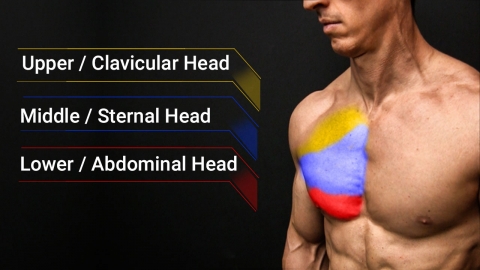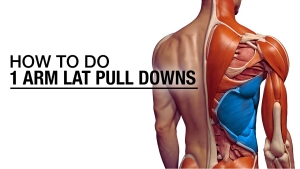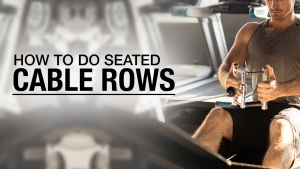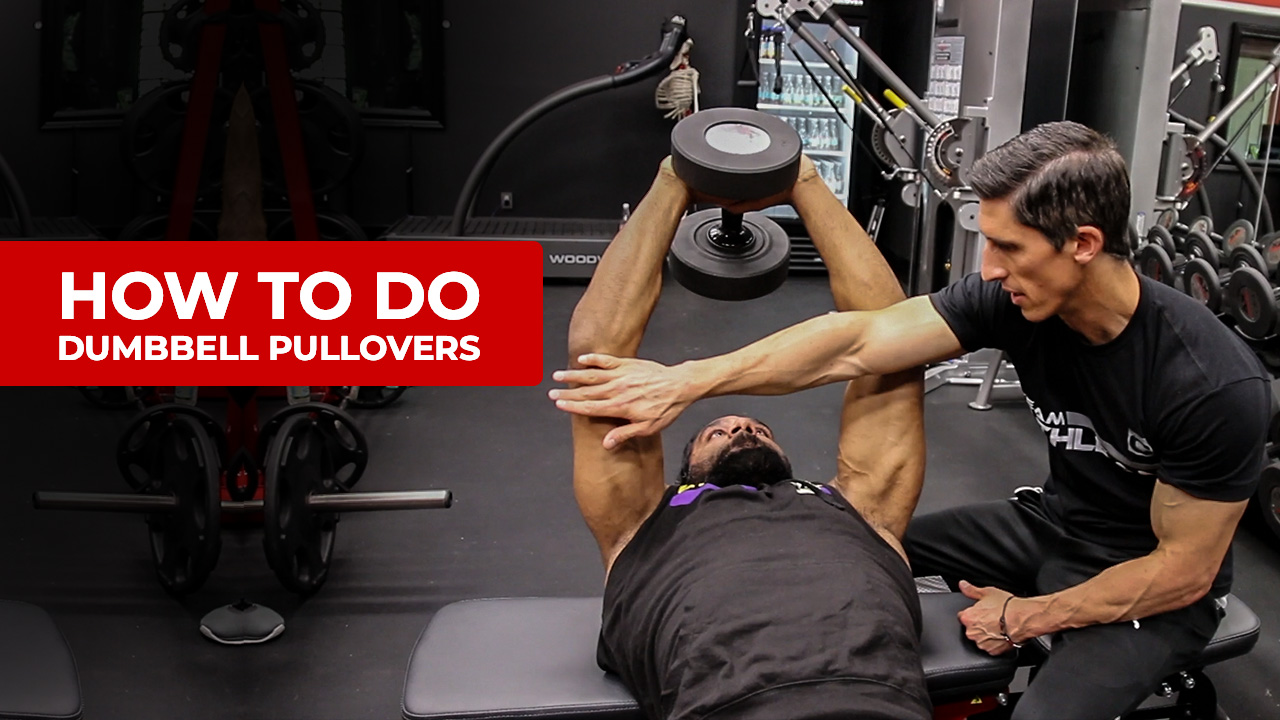
HOW TO DO A DUMBBELL PULLOVER
Want to know one of the most effective chest exercises?
Just look at your last back workout and you’ll find it.
Doubling as a back and chest exercise, the Dumbbell Pullover can train both your pecs and lats.
All you need to do is make a few important tweaks to shift that focus on the right muscle.
Let’s take a closer look at both the chest and lat-focused Dumbbell Pullover.
I’m going to cover the muscles it targets as well as the pullover movement pattern and range of motion to make sure you perform it right every time.
WHICH MUSCLES DOES THE DUMBBELL PULLOVER WORK?
Well, that all depends on how you perform Dumbbell Pullover workouts.
There are two completely different primary muscles that can be activated during an effective Dumbbell Pullover.
It all comes down to a slight tweak in your pullover movement form with the weight. This range of motion makes all the difference between turning this into a chest exercise or a back exercise.
Here are the muscle groups that the Dumbbell Pullover trains:
LATISSIMUS DORSI
As far as muscle activation during pullover exercise, let’s start with the posterior major muscle. Specifically, your lat muscles.
The latissimus dorsi (lats) cover a large area of the lower and middle sections of the back and overall upper body muscles.
Starting in the lumbar and thoracic regions of the spine, the lats attach to the humerus in the upper arm. They are broad, fan-shaped muscles that are key to achieving an iconic V-shaped back.
The latissimus dorsi muscles serve several important functions:
- Extension of the Shoulder Joint: This is the action of moving the arm backwards such as during exercises like Pull-Ups.
- Adduction of the Shoulder: This involves drawing the arm downwards towards the body’s side, as seen in exercises such as the Lat Pulldown.
- Internal Rotation of the Shoulder: This occurs when the arms are turned inwards towards the body’s center, a movement facilitated by the lats.
- Spinal Stability: Beyond their specific actions on the shoulder, the lats are essential for spinal stability, particularly during lifting a load.
PECTORALIS MAJOR AND MINOR
Next up, we’re going to talk about the chest muscles fibers activated during the chest pullover.
Commonly referred to as your “pecs,” the pectoral muscles have several important functions:
- Adduction of the Arm: This is the movement of bringing the arm toward the body’s midline. For example, when you bring your arms together in front of you, as in clapping.
- Medial (Internal) Rotation of the Arm: This refers to rotating the arm inward, towards the center of the body. An everyday action that uses this motion is reaching across your body to grab something from the opposite side.
- Flexion of the Arm: This involves raising the arm from the side to the front, as in lifting something in front of you.
- Extension of the Arm: When moving from a flexed position (arm raised in front) back to a neutral position (arm down at your side), this action comes into play, especially when the arm is raised above shoulder level and then brought down.
- Scapular Movements: The pectoralis minor is involved in several movements of the scapula (shoulder blade), including depression (moving the shoulder blade downward), protraction (moving the shoulder blade away from the spine), and downward rotation (rotating the top of the shoulder blade towards the back).
Most importantly for learning a new chest exercise, the pecs can be broken down according to the direction of the muscle fibers:
UPPER CHEST FIBERS (CLAVICULAR HEADS)


The upper part of your chest has muscle fibers that start near your collarbone and stretch down toward your upper arm bone. They angle up slightly towards the middle of your chest.
MID CHEST FIBERS (STERNAL HEADS)

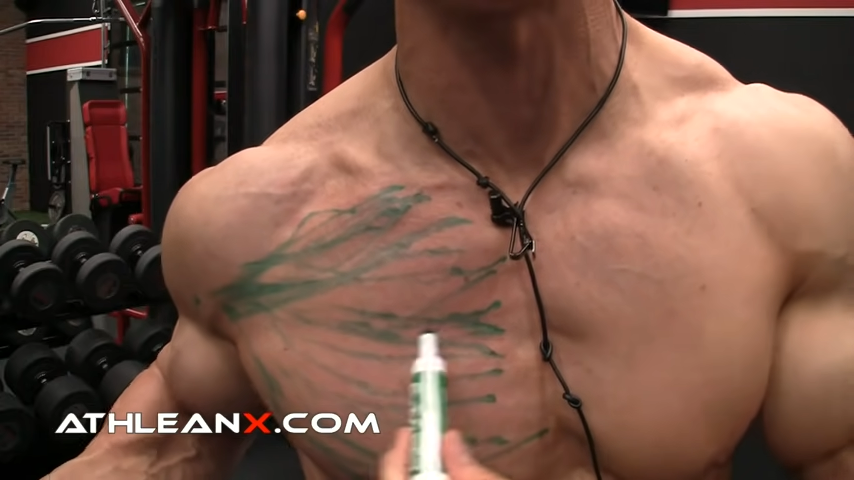
The middle part of your chest has muscle fibers that start from the middle of your chest bone and run straight across your chest like a horizontal line.
LOWER CHEST FIBERS (ABDOMINAL HEADS)

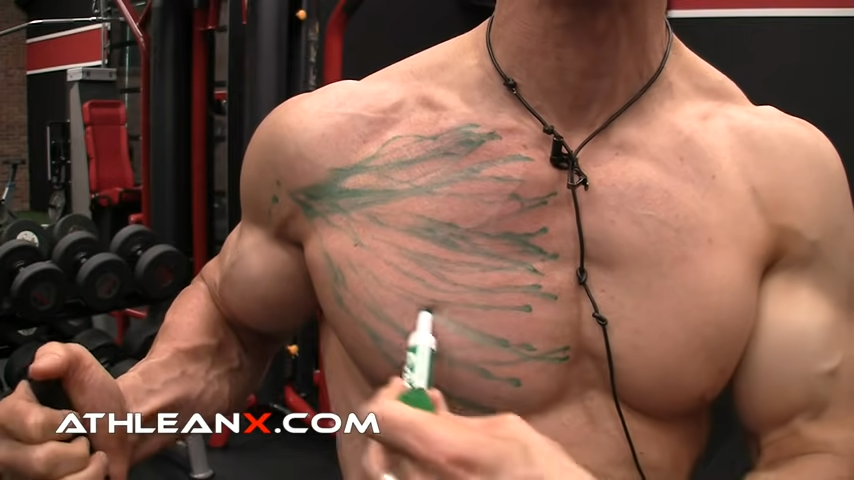
The lower part of your chest has muscle fibers that start from the lower end of your chest bone and angle down toward the middle of your chest, kind of like a slant.
HOW TO PERFORM THE DUMBBELL PULLOVER
Now that you understand which muscles have the potential to be activated, it’s time you learn how to perform a classic Dumbbell Pullover properly.
More importantly, you’ll need to learn how to shift the focus from the back to the chest.
As far as Dumbbell Pullover reps, this will depend on the weight you’re using. If you’re using lighter weights, go with more reps. If you’re lifting heavier weights, perform fewer reps.
Let’s start with the back and cover what many would consider a regular pullover.
DUMBBELL PULLOVER FOR THE BACK


HOW TO DO THE BACK DUMBBELL PULLOVER:
- To perform a proper Dumbbell Pullover, position yourself across a weight bench so that only your upper back and shoulders are in contact with the bench.
- Keep your body perpendicular to the bench, with your hips slightly lower than the bench level to engage your core muscles and provide a greater stretch on the lats. Your feet should be flat on the ground, shoulder-width apart, with knees bent to stabilize your lower body.
- Grab one dumbbell with both hands, holding it securely like you’re cradling the top part with your palms and fingers. Lift your arms straight up over your chest but keep a slight bend in your elbows to protect them from strain. Make sure your body is flat and level with the ground when you start.
- Breathe in and bring the dumbbell down in a curved path behind your head, taking it easy. Make sure you’re moving smoothly and concentrate on feeling your upper back muscles stretching. Keep your arms slightly bent during the exercise to avoid putting too much stress on your elbow joints.
- Exhale as you bring the dumbbell back to the starting position, following the same arc motion. Keep your shoulder blades pinched and in contact with the bench to ensure stability and to maximize engagement of the back muscles.
WHAT MAKES IT EFFECTIVE: Dropping the hips slightly lower than the bench allows for a greater stretch to be placed directly on the lats.
Now, we move over to the front of your body to learn those important tweaks to make your chest the target muscle.
DUMBBELL PULLOVER FOR THE CHEST

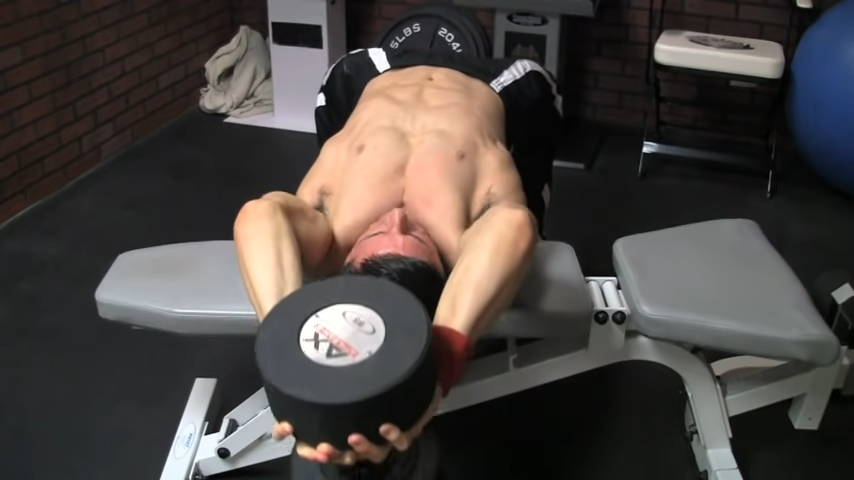
HOW TO DO THE CHEST DUMBBELL PULLOVER:
- You’ll follow much of the same setup as the traditional Pullover but here are the changes to consider:
- First, do not lower the dumbbell all the way down past your head. It’s not necessary here. This places a greater stretch on the lats and we’re trying to target the pecs.
- Second, as you move the weight back to the starting position, you’ll want to focus on initiating a proper contraction.
- To do so, add an extra squeeze of your hands on the dumbbell, as if you’re moving your hands in toward one another and then downward. (You won’t literally do that, but this is the contraction you should feel.)
- Again, every time you come up, pretend that you’re moving your hands in and then down.
WHAT MAKES IT EFFECTIVE: With the “in and down” movement, you’re actually engaging the chest because all you’re doing is mirroring what would be Standing Presses if you stood up.
COMMON MISTAKES AND HOW TO CORRECT THEM
Let’s dive deeper into the Dumbbell Pullover exercise and steer clear of some common slip-ups, wrong moves, and incorrect form.
Whether you’re trying to build chest or back muscles, knowing how to avoid these mistakes will help you get the most out of your workouts and keep things injury-free.
LOWERING THE DUMBBELL TOO FAR
Let’s say that your goal is to target the chest with the Dumbbell Pullover.
One of the most common mistakes when performing the Dumbbell Pullover is lowering the dumbbell too far down past your head, which places excessive strain on your back and may not effectively target the chest.
To correct this, simply limit the downward movement, stopping when your upper arms are parallel to the ground. This will help focus the exercise on your chest.
NOT SQUEEZING AT THE TOP
Another tip if you’re going after those chest muscles:
If you neglect to add an extra squeeze of your hands on the dumbbell as you move it back to the starting position, you might miss out on fully engaging your chest muscles.
NEGLECTING PROPER FORM AND BODY POSITION
The rest of these mistakes can be applied to both the chest and back Dumbbell Pullovers.
Failing to maintain the correct form and body position can reduce the effectiveness of the Dumbbell Pullover and increase the risk of injury.
To correct this, ensure your upper back and shoulders are firmly pressed against the flat bench for proper scapular stability.
Keep your feet flat on the ground, knees bent, and hips slightly lower than the bench level to engage your core muscles and provide a greater stretch on the lats.
Maintain a slight arch in your lower back and a slight bend in your elbows throughout the movement for proper overhead position.
LOSING CONTROL OF THE DUMBBELL
Allowing the dumbbell to drift away from your body or losing control during the exercise can lead to strain on your shoulder joints.
To correct this, focus on a controlled and smooth motion.
Keep the dumbbell close to your body as you move it and concentrate on feeling the targeted muscle group (either chest or back) working.
BREATHING IMPROPERLY
Neglecting your breathing pattern can impact your performance. Some individuals hold their breath, which can hinder their ability to complete the exercise correctly.
To correct this, remember to inhale as you lower the dumbbell and exhale as you raise it, maintaining a consistent and controlled breath throughout.
USING EXCESSIVE WEIGHT
Attempting to lift too heavy a weight can compromise your form and increase the risk of injury.
To correct this, start with a manageable weight that allows you to perform the exercise with proper form and control.
Gradually increase the weight as you become more experienced and stronger.
DUMBBELL PULLOVER VARIATIONS
Adding variety to your exercise routine can lead to excellent muscle growth and keep your workouts exciting.
Dumbbell pullovers offer several variations that can target different muscle groups and keep your fitness journey engaging.
INCLINE DUMBBELL PULLOVER
Try the Incline Bench Cable Pullover or the Incline Dumbbell Pullover to focus on your upper chest and engage your abdominal muscles for stability.
PULLOVER VARIATIONS
Experiment with pullover variations to challenge different muscle groups and add versatility to your workouts within training programs.
This goes beyond switching up your exercises. You can also use different modalities like resistance bands, kettlebells, and barbells.
ELBOW FLEXION WITH NARROW GRIP
Incorporate variations like the narrow grip or overhand grip for a different feel and muscle activation.
Secure your grip, maintaining correct form for consistent resistance and effective weight loss exercises.
BALANCING WEIGHT
Find the right balance between using heavy weights for muscle gain and lighter weights for a safer shoulder position, especially if you have poor shoulder mobility or previous shoulder injuries.
CORE AND STABILITY
Engaging your core strength while performing pullovers is crucial for strength and additional load balance.
By exploring these variations and maintaining correct form, you can diversify your routine, avoid rookie mistakes, and make the most of one of your favorite isolation moves.
Don’t hesitate to incorporate stability balls or medicine balls to further challenge your core and provide an effective resistance exercise.
Remember to always stay within an acceptable range of movement and consult with a fitness professional if needed to ensure your safety and progress.
Guys, if you want an exercise that’s going to go the distance for both your chest and back, the Dumbbell Pullover is what you want.
Just remember to make those two small adjustments when lowering and raising if you want to target your chest.
This is an excellent exercise to add to your upper body workout program.
Don’t have an upper body workout routine? We can help you with that! Be sure to try our Program Selector and grab the ATHLEAN-X program that best matches your current training goals. We’ve got something for everyone… from beginners to experienced lifters.

- The Dumbbell Pullover is an effective chest and back exercise that can target both pecs and lats simply by adjusting your form.
- Here’s how to perform the Dumbbell Pullover for the back: Lie on a bench so that only your upper back and shoulders touch it.
- Your body should be at a right angle to the bench, with your hips slightly lower than the bench to work your core stability and stretch your back muscles. Keep your feet flat on the ground, shoulder-width apart, and bend your knees for stability.
- Hold a dumbbell with both hands, like cradling its top part, and lift it straight up over your chest with slightly bent elbows to avoid straining them. Keep your body flat and level.
- Inhale and gently lower the dumbbell behind your head in a curved path, moving smoothly and focusing on feeling your upper back muscles stretch. Keep your arms slightly bent to protect your elbows.
- Exhale as you bring the dumbbell back to the starting position along the same curved path. Keep your shoulder blades squeezed together and in contact with the bench for stability and to work your back muscles effectively.
- If you want to target the chest, use the same set-up as above, but make the following adjustments:
- First, when lowering the dumbbell, avoid bringing it too far down past your head. It’s not needed and stretches your back muscles more, but we want to target the chest.
- Second, when lifting the weight back up, give it an extra squeeze with your hands, as if you’re trying to push them together and slightly downward.
DUMBBELL PULLOVER FAQS
The Dumbbell Pullover exercise is definitely worth doing, especially if your goal is muscle mass.
It’s an excellent way to target both the back and the chest, depending on your form.
If you’re a more experienced lifter, you can use heavier weight to focus on strength. Just be sure that you have healthy shoulder mobility.
If you’re looking for an effective exercise for the lats or the pecs, the Dumbbell Pullover (and the Single-Arm Dumbbell Pullover) is a great choice.
The Dumbbell Pullover primarily works the chest (pectoralis major) and the back (latissimus dorsi) but not at the same time.
You’ll have to make two small tweaks in order to focus on the chest instead of the back:
- Don't lower the dumbbell too far down past your head.
- As you bring the weight back to the starting position, squeeze the dumbbell a bit harder, as if you're trying to bring your hands closer together and downward.
Depending on your goals, you can increase or alter the resistance. For example, you can use resistance bands if you want to focus on achieving a deeper range of motion that’s safer than heavier weights.
Another example would be performing Dumbbell Pullover alternatives like the Cable Machine Pullover to change things up and challenge your muscles in a new way.
The Dumbbell Pullover can be used to target the chest and the back, but not at the same time.
To target the back, lie on a bench with your upper back and shoulders in contact, hips slightly lower for a bigger stretch on the lats. Hold a dumbbell with both hands, lift it above your chest with slight elbow bend. Inhale, lower the dumbbell behind your head in a curved path, keeping arms slightly bent for elbow safety. Exhale, return along the same arc, maintaining shoulder blade contact with the bench for stability and back muscle engagement.
To target the chest muscles, you’ll use the same set-up, but you’ll make two important adjustments: First, avoid lowering the dumbbell too far below your head. Second, when returning the weight to the starting position, increase your grip pressure, as if you're trying to bring your hands closer together and downward.
The weight of the Dumbbell Pullover should be determined by your individual fitness level, shoulder mobility, and goals.
It's essential to choose a weight that challenges you but allows you to maintain proper form and control throughout the exercise.
Start with lighter weights that you can lift comfortably for the desired number of repetitions in your workout plan. As you progress and become stronger, you can gradually increase to heavier weight to continue challenging your muscles.
If you have poor shoulder mobility, you might want to consider either using a resistance band or using Dumbbell Pullover Alternatives. Folks with shoulder pain should consult with their doctor before attempting a Dumbbell Pullover.
Here’s a beginner’s guide on how to do a Dumbbell Pullover for the back:
Lie on a weight bench so that only your upper back and shoulders are touching it.
Keep your body at a right angle to the bench with your hips slightly lower than the bench level. This helps engage your core muscles and stretches your back. Your feet should be flat on the ground, shoulder-width apart, with knees bent for stability.
Hold a single dumbbell with both hands, making sure to cradle the top part with your palms and fingers. Lift your arms straight up over your chest but maintain a slight bend in your elbows to avoid straining them. Ensure your body is flat and level with the ground.
Inhale and gently lower the dumbbell in a curved path behind your head, moving smoothly and focusing on feeling your upper back muscles stretching. Keep your arms slightly bent to protect your elbow joints.
Exhale as you return the dumbbell to the starting position following the same arc motion. Keep your shoulder blades pinched and in contact with the bench to stay stable and engage your back muscles effectively.
If you want to activate the chest instead of the back, follow the same set-up, but make these two changes to your form.
Do not let the weight go past your head as you lower it, and as you bring the weight up, squeeze it as if you’re trying to push it “in and down.”
Pullovers are a valuable addition to training programs as they effectively target the latissimus dorsi, the largest muscle in the upper body.
This exercise offers a complete range of motion that helps achieve a deeper muscle stretch. It’s also great for muscle growth.
Incorporating Pullovers can aid in addressing muscle imbalances and contribute to a well-rounded upper body workout routine.

Jeff Cavaliere M.S.P.T, CSCS
Jeff Cavaliere is a Physical Therapist, Strength Coach and creator of the ATHLEAN-X Training Programs and ATHLEAN-Rx Supplements. He has a Masters in Physical Therapy (MSPT) and has worked as Head Physical Therapist for the New York Mets, as well as training many elite professional athletes in Major League Baseball, NFL, MMA and professional wrestling. His programs produce “next level” achievements in muscle size, strength and performance for professional athletes and anyone looking to build a muscular athletic physique.



















